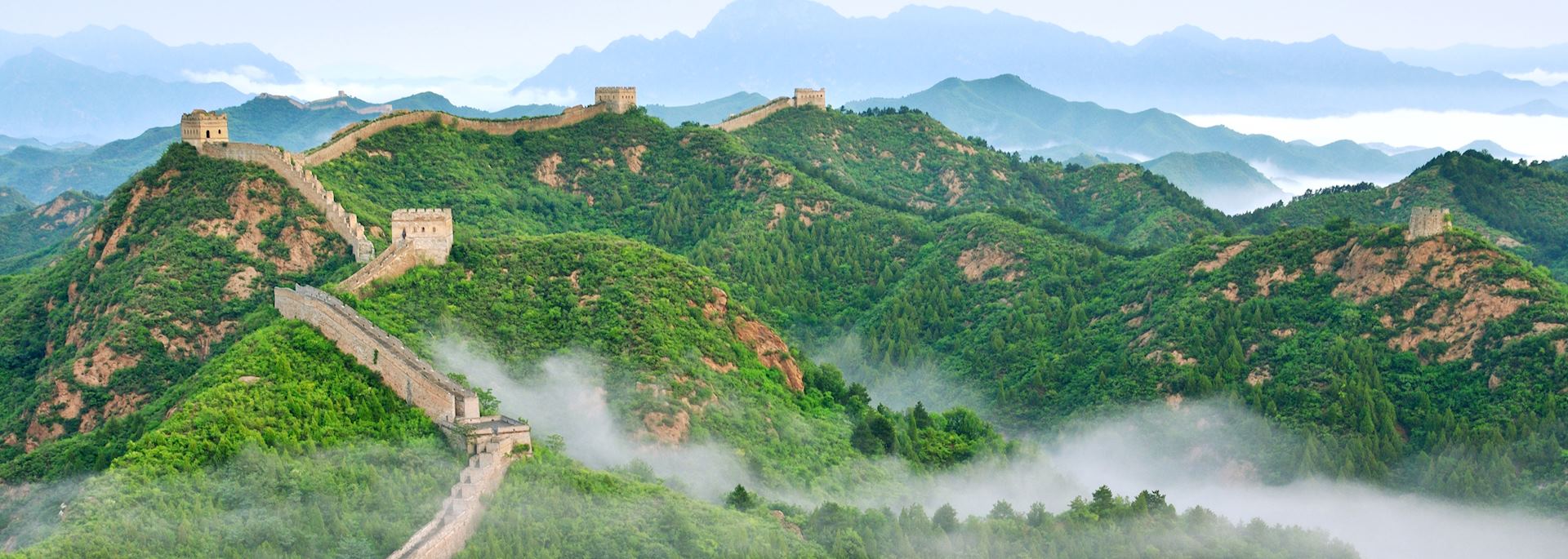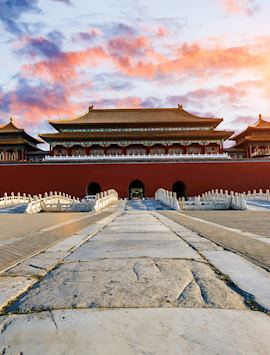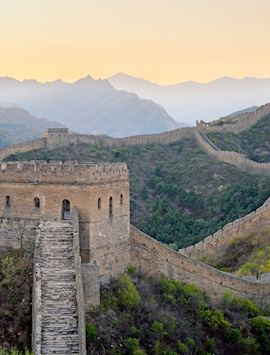By China specialist Duncan
The Great Wall was one of those places I’d always hoped to visit. Then, during the two years I spent living in Beijing, I began to experience the wall just like the locals did — as a weekend hangout. Suddenly, I was a regular.
Familiarity did not breed contempt, however. I was always impressed by its magnitude, the views of it rising and falling into the distance, and just how peaceful and forgotten some sections of the wall could feel.
While certain parts of the wall see hordes of visitors each day, I’ve found that if you pick the right sections you can have a far quieter, more authentic experience.
Visiting the Great Wall of China
Which section of the wall should I visit?
I’ve been lucky enough to visit several sections of the wall. There’s one in particular that’s within an hour’s drive of Beijing — Badaling. But with such easy access, it can get extremely busy with day trippers.
The Huangyaguan section
A couple of hours from the city the Huangyaguan section sees fewer visitors. Constructed more than 1,400 years ago, during the Northern Qi dynasty, it was extensively restored at the time of the Ming dynasty under the instruction of General Qi Jiguang, who added battlements and further reinforcements. In the 1980s it underwent further restoration, but it’s easy to imagine what it would’ve been like in its heyday.
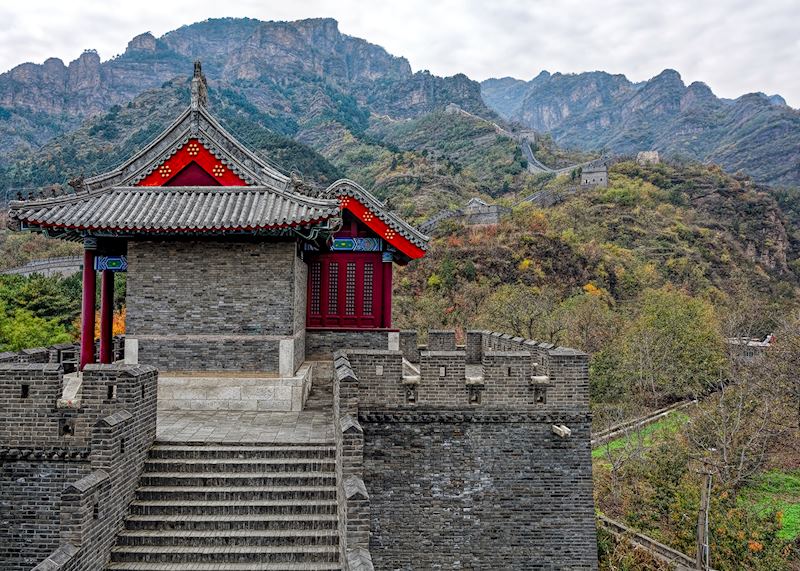
From the section’s east gate you can hike westwards for 7 km (4 miles) to the Ming-dynasty fortress complex at Huangya Pass. While this section is relatively short, you’ll need to navigate steep steps as it snakes its way up the mountainside, so walking along it can take two or three hours.
The Mutianyu section
This section can be admittedly busy, though it’s not as frenetic as Badaling. It can also feel a bit like a theme park, with its glut of franchises and shops clogging the entrance, but there are still lots of reasons why you might want to visit Mutianyu might suit you.
It’s especially convenient if you’re short on time — as you can visit it during half a day, since it’s located an hour’s drive closer to Beijing than the Jinshanling section (see below). If you can’t (or don’t wish to) hike along the wall, you can take a cable-car back up and down the Mutianyu section, and still enjoy some impressive vistas.
The wall here was renovated in the 1980s, but you’ll still be standing on the original structure — the alternations were limited to shoring up some sections for safety. That means you’ll get to see a section of the wall as it would have been — an enormous, sturdy dragon’s backbone zigzagging up and down the surrounding hills. Make sure to look out at one particular nearby mountainside while you’re up on the wall and you’ll see some writing etched into the landscape declaring ‘Long live Chairman Mao.’
And, for the young (and the young at heart), after admiring the wall you can take a toboggan ride back down.
The Jinshanling section
Then there’s the Jinshanling section. About a two-hour drive northeast of Beijing, it offers a peaceful and atmospheric experience of the wall. Constructed during the early Ming dynasty and renovated in 1567, it snakes for 10.5 km (6.5 miles) from Longyu Pass in the west to Wangjing Tower in the east at an altitude of 700 m (2,297 ft) above sea level.
I’ve often spent the best part of a day at Jinshanling and only saw about 15 other visitors. It meant I could take photographs undisturbed and fully appreciate the wall’s scale, as well as the expansive views over forested peaks and valleys.
Though parts of it have eroded away, Jinshanling is one of the best-preserved sections, with much of its original walls and watchtowers still intact. You don’t have to imagine what it would have been like: it’s all there in front of you.

Spending the day at Jinshanling
You can easily visit Jinshanling on a full-day outing from Beijing, with most people spending around four hours at the wall. The day is whatever you make of it: some people stay for a couple of hours, others choose to take longer, walking farther along the wall to explore its various watchtowers and take in the views.
I was picked up by my private driver-guide in the morning for the 150 km (93 mile) journey. Once out of the city, we wound through mountainous landscapes that began to set the scene for what was to come.
On arrival, you can either take a 15-minute cable car ride up to the wall’s highest point, or climb the original centuries-old stairwells to the top (these are steep, so a reasonable level of fitness is required).
Stepping onto the wall felt surreal as I took in the empty pathway stretching before me. About 3 m (9.8 ft) wide and flanked by waist-high walls on either side, the stone pathway is interrupted every 50–100 m (164–328 ft) by one- or two-tiered watchtowers. Made of sandy bricks and stone, they rise like giant chess pieces on the hillsides.
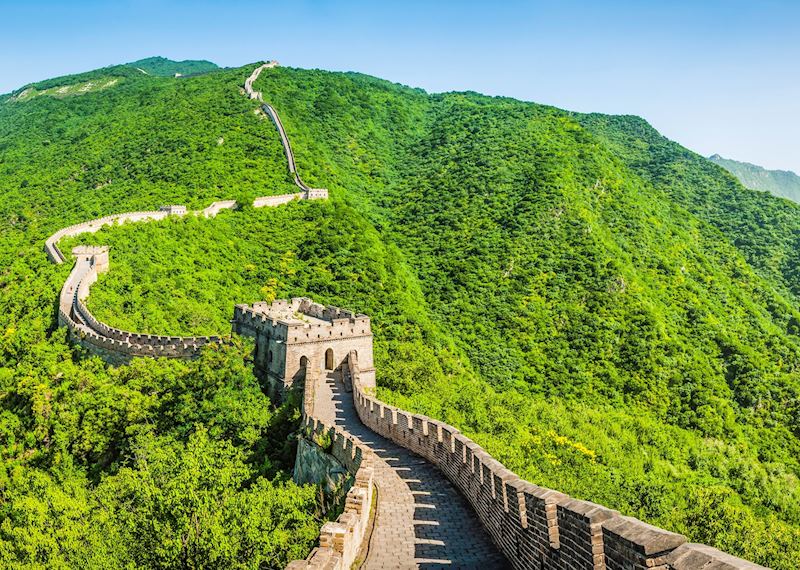
You can venture inside these towers — some have English inscriptions telling you about their historic significance. I climbed to the top of one and sat alone simply to enjoy a few moments of peace and contemplation. The green farmland and forest stretched for miles below me, with the wall disappearing off into the distance.
Walking the Great Wall of China
While you may be content in taking short, slow strolls along the immediate section of the wall, there is the option to walk farther. I chose to walk for a couple of hours, following a circular route. After getting up onto the wall at Zhuanduokou Pass, I walked along it to Houchuankou Pass. From there you can follow the valley back to the car park.
With the wall meandering over hills and twisting through valleys, I was granted different views every few minutes. I was also able to distinguish between the older and newer sections of the wall, based on how eroded they were and the shade of their stone.
Being accompanied by a guide gives you the advantage that you can take your time and choose which parts to explore in-depth. As you walk, your guide will tell you about the wall’s history, filling you in on the various dynasties that played their part in its construction, and the attempted attacks that happened here over the years.
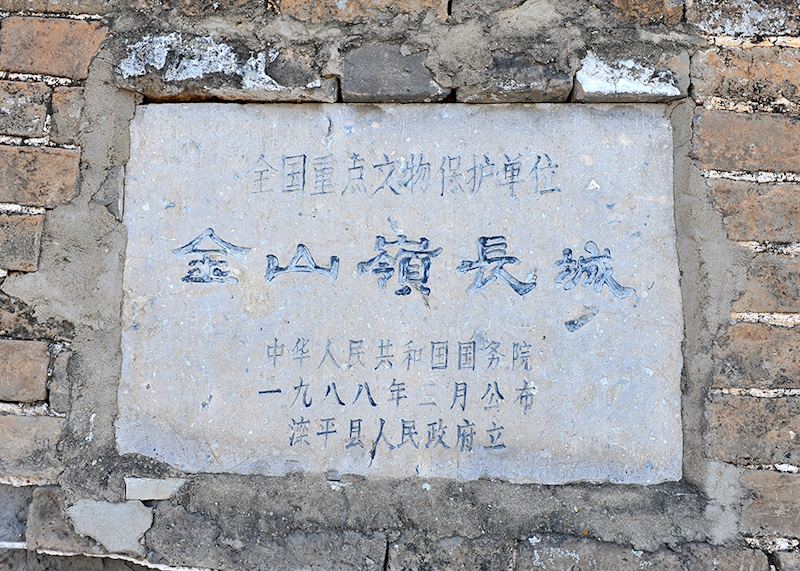
Parts of the wall were built by soldiers. One of the more unusual features that my guide pointed out were the Barrier Walls — secondary walls within the wall that soldiers would have used to protect themselves when under attack. I also came across bricks bearing engravings, which my guide explained marked the time when they were made and which battalion made them.
Hiking from Jiankou to Mutianyu
You’ll begin with an ascent up steeply wooded slopes before reaching a lookout on the Great Wall proper, and then you start to walk along an isolated slither of the structure.
Unlike other stretches, Jiankou is completely unrestored. The stones are cracked and uneven, and sometimes you’ll need to hike along a bare mountain ridge before rejoining the crumbling path. Typical routes along the Jiankou portion take roughly four hours, and you’ll barely meet a soul along the way.
Where to stay when visiting the Great Wall
As most people visit the wall as a day out from Beijing, there are plenty of accommodation options to choose from. I like staying in the city’s historic Shijia Hutong district. One of the oldest parts of the capital, the area is made up of narrow, labyrinthine lanes and adjoining courtyard houses known as hutongs, where people have lived since the medieval Yuan dynasty.
Among them is the Shichahai Shadow Art Hotel, a modern hotel designed with Chinese elements in mind. While staying here you have the chance to experience a shadow art puppet performance, which are held three times a week in the hotel’s central area. You’re also close to attractions such as Houhai Lake and the Bell and Drum Towers.
If you’d prefer the facilities of a larger, international hotel, I find the Regent very dependable. It’s located right in central Beijing and has an indoor pool, spa and gym.
Staying overnight at the Great Wall
It is, in fact, possible to stay at the Great Wall itself, at Mutianyu. The advantage it gives you is being able to experience the wall in the evening once everyone else has left, and early in the morning before visitors arrive. You can also watch the sun rising and setting over the wall with no one else around, and with little to no light pollution, the night skies are clear for stargazing.
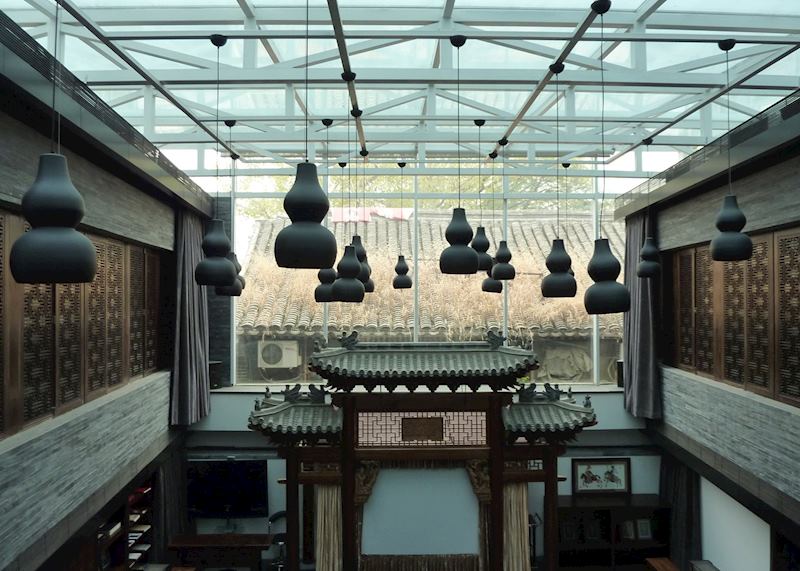
Brickyard at Mutianyu is a former brick factory, turned hotel, situated in a small village at the base of the wall. The property has plenty of character, with exposed bricks in the rooms linking to the hotel’s heritage. There’s a focus on the environment here, with all building materials sourced or recycled from the local area.
Best time to visit the Great Wall of China
The wall can be visited all year, but I’d say the best times are late March to May, and September to early November. During these months, temperatures are comfortable, rain is less likely and the scenery is at its best. The landscape either comes to life in vivid greens or takes on the red, orange and gold tones of autumn. April is particularly pretty as the slopes are carpeted in apricot flowers.
For something different, visit during the winter, when the hills are blanketed in snow. Avoid visiting during national breaks, when domestic tourists flock to the site.
Practicalities of visiting the Great Wall of China
- Due to its proximity to Beijing, a trip to the wall can be slotted into almost any China itinerary.
- You’ll need to be mobile and have some level of fitness, as there are steps all along the wall. However, it’s up to you how much you walk and taking the cable car means you don’t have to scale the steep steps up to the wall.
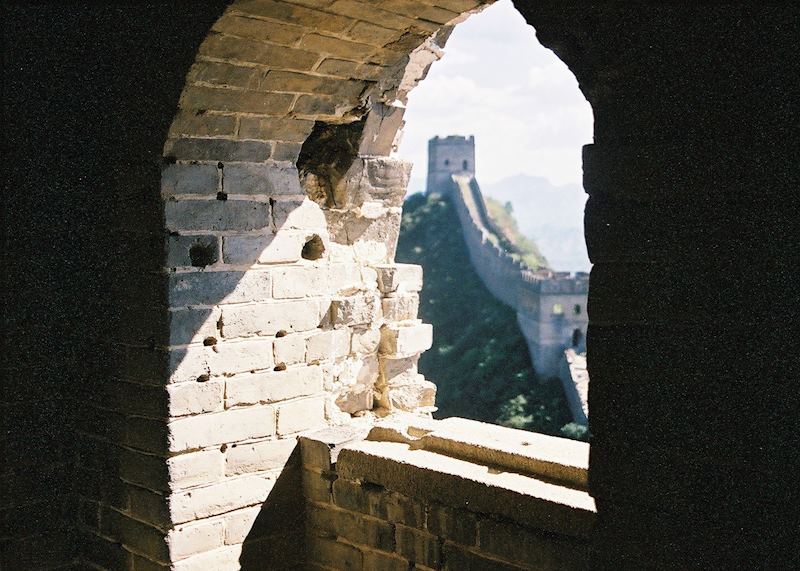
A background to the Great Wall of China
How long is the Great Wall of China?
With sections being lost to erosion over the years, no one knows the wall’s length for sure. The sections built during the Ming dynasty (1368 to 1644) stretch over 6,000 km (3,728 miles). But, archaeological studies suggest that the entire wall, with all of its branches, once spanned around 21,000 km (13,049 miles), beginning in Dandong on China’s northeast coast and continuing right along the old Mongolian border to Lop Lake in the northwest.
The wall’s scale, age and historical significance have led to it being classed as one of the New 7 Wonders of the World. Claims that you can see the Great Wall of China from space have been disputed, though sections of it have been captured using radar imagery.
When was the Great Wall of China built?
Construction began during the Spring and Autumn (770–476 BC) and Warring States (475–221 BC) periods of the Zhou dynasty and continued until the 16th century. The workforce was primarily made up of soldiers, criminals, slaves and peasants. It’s estimated that over two million of them died while toiling in the harsh conditions, giving the wall its nickname, The Long Graveyard.
Most of the wall that still exists today was built during the Ming dynasty, when watchtowers and fortresses were added to strengthen its defence.
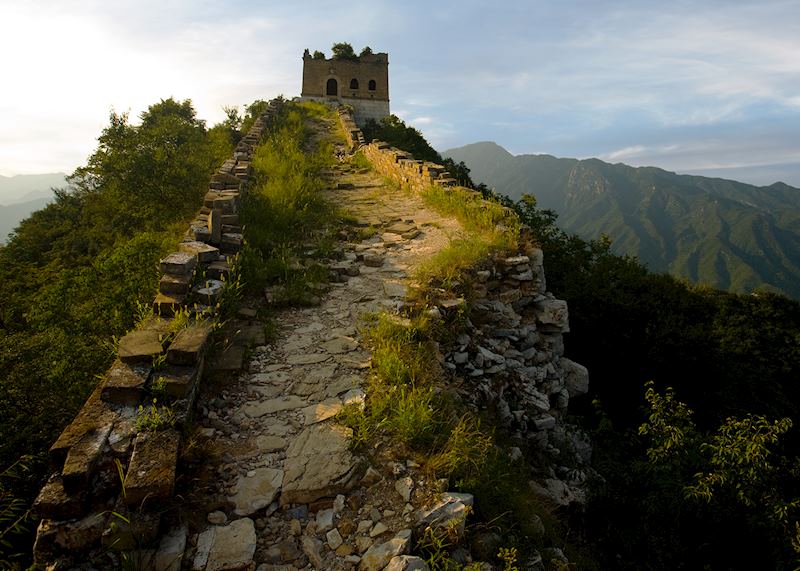
Why was the Great Wall of China built?
During the Zhou dynasty, China was made up of different states, with battles often breaking out between them. They built separate defensive walls for protection against each other. These walls also acted as a barrier against nomadic tribes that attempted raids and invasions from the north.
It was only once the states became united under the Qin dynasty (221–206 BC) that the various sections were gradually joined up to form the beginnings of what’s now known as the Great Wall. This was to strengthen the defence further against the northern tribes, particularly the Mongolians. Even today, the wall is actually more like a network of walls than one long structure.
Over the years, the wall has also acted as a border control for regulating immigration and protecting trade along the Silk Route, providing barracks for soldiers, and acting as a transportation and information corridor.
It’s hard to imagine what China would be like today if the wall hadn’t been built. Seeing it still standing reminds you of the power that the various emperors once held, as well as the pressure they were under from their enemies.
Start planning your trip to China
Start thinking about your experience. These itineraries are simply suggestions for how you could enjoy some of the same experiences as our specialists. They're just for inspiration, because your trip will be created around your particular tastes.
View All Tours in China
